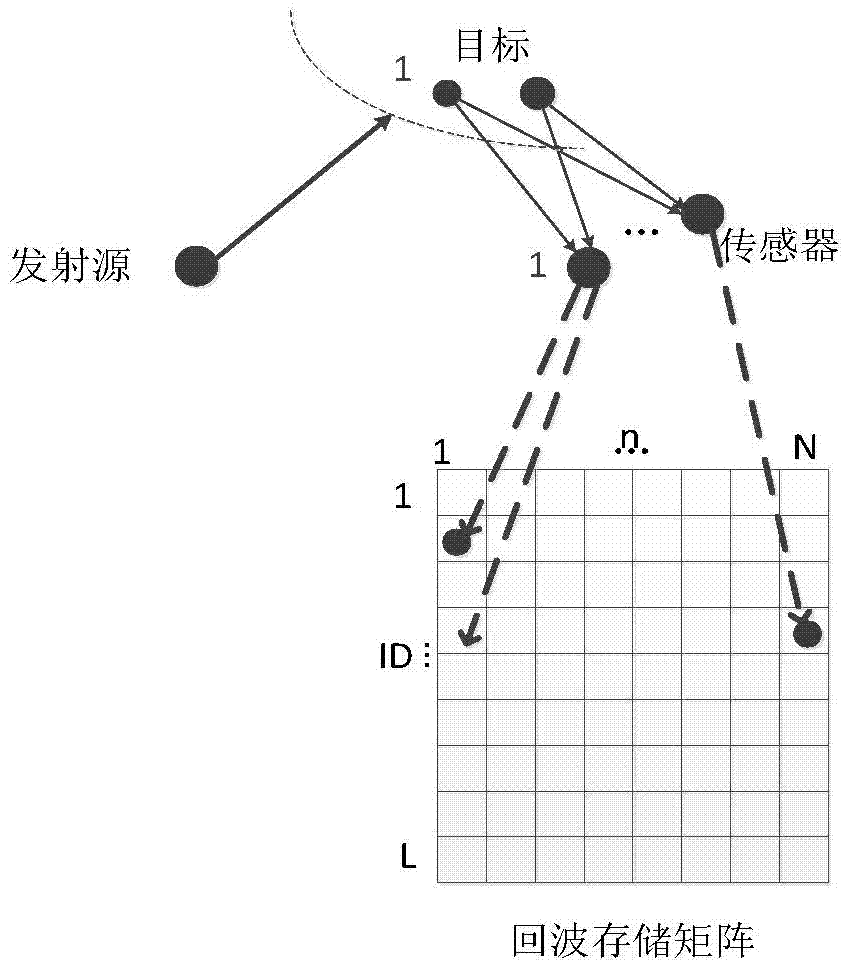Multi-sensor multi-target location method based on imaging strategies
A multi-target positioning and multi-sensor technology, applied to instruments, radio wave reflection/re-radiation, and use of re-radiation
- Summary
- Abstract
- Description
- Claims
- Application Information
AI Technical Summary
Problems solved by technology
Method used
Image
Examples
Embodiment Construction
[0101] The present invention mainly adopts the method of computer simulation for verification, and all steps and conclusions are verified correctly on MATLAB-R2011a. The specific implementation steps are as follows:
[0102] Step 1. Initialization of relevant parameters of the sensor network multi-target localization method based on the imaging strategy
[0103] The parameters for initializing the target location are as follows: the spatial distance resolution of the radar is δ r =10m; the number of range units of the radar in the upward distance is L=10000; the electromagnetic wave propagation speed v=3×10 8 m / s; take the transmitter position as the origin, establish a Cartesian coordinate system in the geographical space where the target, transmitter and receiver are located; record the transmitter position as Pt=[0,0,0]; the number of air targets Ntar= 10. The scattering cross-sectional area of the target σ=(30×rand(1)+1)m 2 , the targets are randomly distributed in a ...
PUM
 Login to View More
Login to View More Abstract
Description
Claims
Application Information
 Login to View More
Login to View More - R&D
- Intellectual Property
- Life Sciences
- Materials
- Tech Scout
- Unparalleled Data Quality
- Higher Quality Content
- 60% Fewer Hallucinations
Browse by: Latest US Patents, China's latest patents, Technical Efficacy Thesaurus, Application Domain, Technology Topic, Popular Technical Reports.
© 2025 PatSnap. All rights reserved.Legal|Privacy policy|Modern Slavery Act Transparency Statement|Sitemap|About US| Contact US: help@patsnap.com



